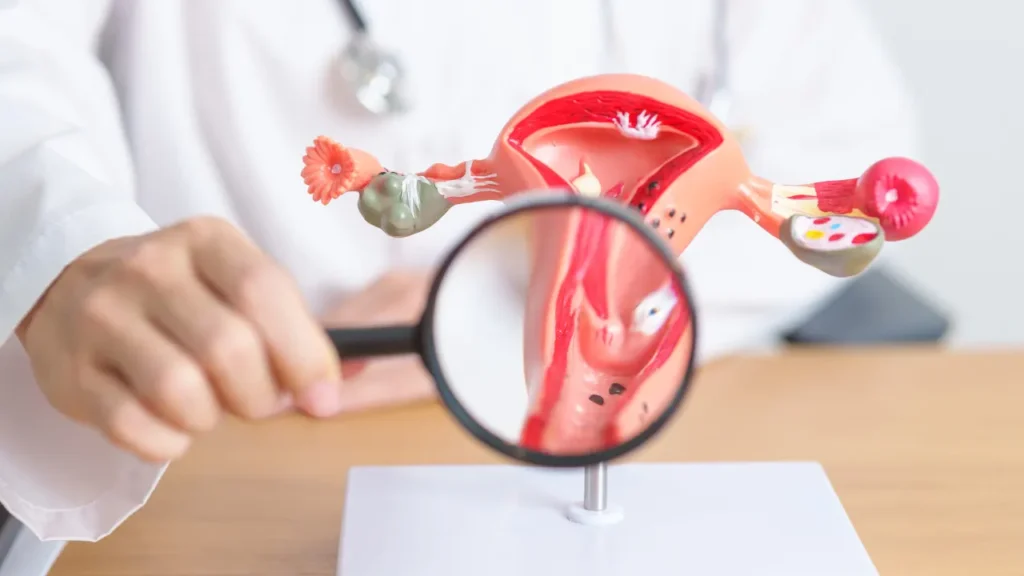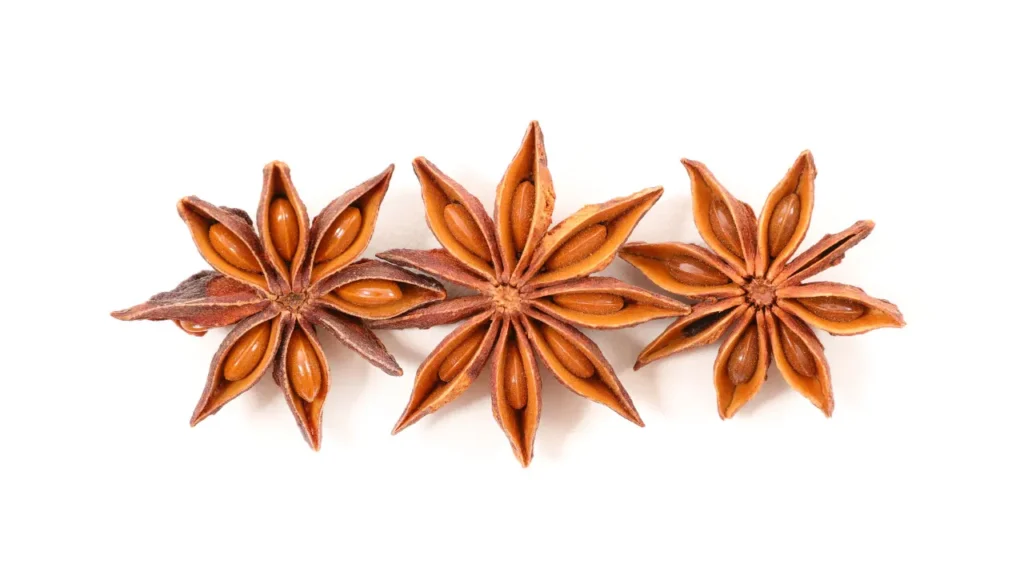Since ancient times, people have grown Anise (Pimpinella anisum). Anise is an herbaceous plant with a wide range of culinary, medicinal, and therapeutic purposes. The Anise plant’s seeds, which have a distinctively sweet and aromatic flavors, are frequently used as a spice and flavoring in many dishes and liqueurs. Anise oil, a highly concentrated volatile oil that has been widely utilized as a nutritional supplement, is likewise primarily derived from the seeds. This article explores the nature of Anise as a dietary supplement, its health advantages, the ideal dosage, any potential negative effects, any possible drug interactions, and the most ethical applications. Additionally, it offers a thorough examination of the physiological mechanisms of Anise and its chemistry.
You May Also Like:
What Are the Best Mushrooms for Brain Health? Here Are the Facts.
Keep Your Brain Young With the 5 Most Powerful Nootropic Supplements
ANISE: Benefits, Dosage, Side Effects, Drug Interactions, And Other Important Information is an original (NootropicsPlanet) article.
Nature of Anise
Anise seeds have a distinctive flavor, perfume, and therapeutic characteristics. This is because they contain a variety of phytochemicals, such as phenolic compounds, volatile oils, and flavonoids. Anethole, an aromatic molecule from the phenylpropene class, is the main bioactive component of Anise seeds. Anethole is known to have a variety of pharmacological actions, including antioxidant, anti-inflammatory, and antibacterial activities, and is what gives Anise its distinctive sweet and licorice-like flavor.
Anise oil is produced by steam distilling the crushed seeds. It is made up of a complex blend of volatile chemicals, with anethole making up as much as 90% of the total. Other minor components that also contribute to the overall pharmacological effects of Anise oil are estragole, p-anisaldehyde, anisyl acetone, and anisyl alcohol.
Health Benefits of Anise
Numerous studies have emphasized Anise’s potential health advantages, which can be ascribed to the variety of bioactive substances it contains. Some of the main health advantages are:
a. Antioxidant and Anti-inflammatory: Anethole, the main bioactive ingredient in Anise, has potent antioxidant and anti-inflammatory properties. These properties can help protect cells from oxidative damage, lessen inflammation, and reduce the risk of chronic diseases like cardiovascular disease and some types of cancer.
b. Antimicrobial activity: Research has shown that Anise oil has the ability to fight off a variety of diseases, including bacteria, fungus, and viruses. Due to the presence of anethole and other volatile chemicals that compromise the integrity of the microbial cell membrane and hinder the synthesis of essential biomolecules, ultimately leading to cell death.
c. Benefits for the digestive system: Anise has long been used as a digestive aid and a treatment for digestive issues like bloating, gas, and indigestion. By lessening smooth muscle spasms and encouraging the ejection of intestinal gas, its carminative and antispasmodic qualities can aid in easing digestive discomfort and supporting good digestion.
d. Help respiratory problems: Anise has expectorant and antitussive effects, which can help ease respiratory problems brought on by colds, coughs, and bronchitis. Additionally, Anise oil has bronchodilator properties that help to relax bronchial smooth muscles and increase lung airflow.
e. Neuroprotection: Emerging research suggests that anethole and other phenolic chemicals found in Anise seeds may have neuroprotective benefits, which can aid in the management and prevention of neurological disorders.
f. Hormonal effects: Traditionally, galactagogues like Anise have been utilized to increase milk production in nursing women. Anethole and other phytoestrogens in Anise seeds have estrogenic properties that have the potential to modify hormonal balance and increase the production of prolactin, the hormone responsible for milk production.
g. Anticonvulsant activity: Research has revealed that Anise oil has anticonvulsant characteristics that may be useful in treating epilepsy and other seizure disorders. Gamma-aminobutyric acid (GABA), which is essential in controlling neuronal excitability, is one of the inhibitory neurotransmitter systems that are hypothesized to be involved in the underlying mechanisms of action.

Chemistry of Anise
The numerous bioactive substances found in Anise seeds fall are categorized in three ways: phenolic compounds, volatile oils, and flavonoids. Anethole, which gives Anise its distinctive sweet and licorice-like flavor, has been thoroughly investigated for its pharmacological properties.
Estragole (methyl chavicol), p-anisaldehyde, anisyl acetone, and anisyl alcohol are other components of Anise oil that together contribute to its overall pharmacological effects. The flavonoids quercetin, luteolin, and apigenin, which have antioxidant, anti-inflammatory, and anticancer activities, are among the flavonoids found in Anise seeds.
Physiological Mechanisms of Action
Anise has a wide range of health advantages that can be linked to its bioactive components, which work through a variety of physiological pathways to have an impact. The following are some of the main mechanisms of action:
a. Anethole and other phenolic compounds found in Anise seeds can neutralize free radicals and suppress the development of reactive oxygen species (ROS), avoiding cellular damage and oxidative stress. This action also has anti-inflammatory effects. Also, these substances have the ability to regulate the expression of pro-inflammatory cytokines and prevent nuclear factor-kappa B (NF-B), a crucial transcription factor involved in the control of inflammatory responses, from becoming activated.
b. Antibacterial mechanisms: The antibacterial qualities of Anise oil are due to the presence of anethole and other volatile chemicals, which can damage the integrity of microbial cell membranes and prevent the creation of vital macromolecules, finally causing cell death.
c. Gastrointestinal mechanisms: The modulation of smooth muscle contractions and the decrease of intraluminal pressure within the gastrointestinal tract are responsible for Anise’s carminative and antispasmodic effects. The primary mechanism by which this impact is mediated is by inhibiting calcium channels, which are essential for controlling muscular contraction.
d. Respiratory health: Bronchial smooth muscle relaxation and improved lung airflow can be facilitated by Anise oil’s modulation of muscarinic receptors and suppression of phosphodiesterase enzymes. These are important in controlling bronchial muscle tone.
e. Neuroprotective mechanisms: Anise seeds contain anethole and other phenolic compounds that have the ability to modulate neurotransmitter systems, inhibit neuroinflammatory pathways, and upregulate neurotrophic factors. These support the survival and function of neurons.
f. Hormonal mechanisms: By interacting with estrogen receptors and altering the expression of estrogen-responsive genes, anethole and other phytoestrogens found in Anise seeds have the ability to modify hormonal balance.
g. Anticonvulsant mechanisms: The modulation of inhibitory neurotransmitter systems, such as GABA, which are essential in controlling neuronal excitability, is responsible for Anise oil’s anticonvulsant effects. The potentiation of GABAergic transmission and the suppression of excitatory neurotransmitter release may both contribute to this effect.

Optimal Dosage of Anise
Age, health status, and the particular health problem being treated can all affect your ideal dosage of Anise as a nutritional supplement. The following dosages can be taken into account as a general recommendation:
Adults can benefit from consuming 0.1 to 0.3 mL of Anise oil or 1 to 3 gm of crushed Anise seeds on a daily basis for general health.
b. For kids: It’s best to utilize Anise supplements with caution and under a doctor’s supervision with respect to kids. The dosage needs to be modified based on the child’s age, weight, and overall health.
Remember that these dosages are broad suggestions and should be customized to specific needs while being monitored by a healthcare professional.
Side Effects of Anise
When used as a meal or nutritional supplement in moderation, Anise is typically regarded as harmless. The following negative effects, however, may occur with excessive consumption or continuous usage of Anise:
a. Allergic responses: Some people may develop allergic reactions to Anise, which show as skin rashes, itching, and swelling of the cheeks, lips, or tongue. Anaphylaxis and other serious allergic reactions can happen on occasion.
b. Digestive disturbances: Excessive amounts of Anise may result in stomachaches, nausea, vomiting, diarrhea, and abdominal pain.
c. Hormonal imbalance: Anise’s estrogenic characteristics have the potential to disrupt hormonal balance, especially in people with hormone-sensitive diseases such endometriosis, uterine fibroids, breast cancer, and ovarian cancer.

Potential Substance Interactions with Anise
The following chemicals and drugs may potentially interact with Anise:
a. Anticoagulants and antiplatelet medications: These types of drugs, such as warfarin, heparin, and aspirin, can be made more effective by Anise, which raises the risk of bleeding.
b. Anticonvulsant drugs: Phenytoin, valproic acid, and carbamazepine are a few examples of anticonvulsant drugs that may be adversely affected by Anise’s anticonvulsant qualities.
c. Hormonal medications: Anise’s estrogenic actions may reduce the effectiveness of hormonal therapies including hormonal contraceptives and hormone replacement therapy (HRT).
Best Responsible Uses of Anise
The following recommendations should be taken into account when using Anise as a nutritional supplement to ensure safety and responsibility:
a. Speak with a medical expert: Consult a healthcare provider before beginning any new nutritional supplement so they may offer individualized advice based on your needs and current health.
b. Start with a low dose: Start with a low dose of Anise and gradually raise it as tolerated in order to reduce the risk of side effects and potential interactions.
c. Keep an eye out for any negative effects: Keep an eye out for any indications of discomfort and harm.
ANISE:
Conclusion
Anise is a fragrant and potent plant. It has been used in a variety of contexts for numerous uses, including medicinal practices. Modern science has been able to shed light onto specific components and mechanisms of Anise that contribute directly to its ability to improve health. Luckily, there are a variety of ailments and health issues that Anise can help mitigate. With research and consultation with health professionals, it’s a substance that is safe for consumption for people of all ages.

References:
- “Anise (Pimpinella anisum L.), a dominant spice and traditional medicinal herb for both food and medicinal purposes.” Retrieved from: https://www.tandfonline.com/doi/full/10.1080/23312025.2019.1673688
- “The effect of anise oil (Pimpinella anisum L.) on broiler performance.” Retrieved from: https://www.researchgate.net/profile/Bestami-Dalkilic/publication/45948544_The_Effect_of_Anise_Oil_Pimpinella_anisum_L_On_Broiler_Performance/links/594c4ed40f7e9ba1ec46c298/The-Effect-of-Anise-Oil-Pimpinella-anisum-L-On-Broiler-Performance.pdf
- “Anise Potential Health Benefits.” Retrieved from: https://journals.lww.com/nutritiontodayonline/fulltext/2022/03000/Anise__Potential_Health_Benefits.10.aspxKeith
Important Note: The information contained in this article is for general informational purposes only, and should not be construed as health or medical advice, nor is it intended to diagnose, prevent, treat, or cure any disease or health condition. Before embarking on any diet, fitness regimen, or program of nutritional supplementation, it is advisable to consult your healthcare professional in order to determine its safety and probable efficacy in terms of your individual state of health.
Regarding Nutritional Supplements Or Other Non-Prescription Health Products: If any nutritional supplements or other non-prescription health products are mentioned in the foregoing article, any claims or statements made about them have not been evaluated by the U.S. Food and Drug Administration, and such nutritional supplements or other health products are not intended to diagnose, treat, cure, or prevent any disease.


